
When I poured the sugar cane, then stir in a cup of hot tea, sometimes I imagine the government-owned sugar cane plantation's great profit in the period of Cultuurstelsel in Dutch Indies.
Now, the of colonial legacy was memorialized in an old sugar factory,
Suiker Fabriek Gondang Winangoen 1860, Klaten, Central Java.
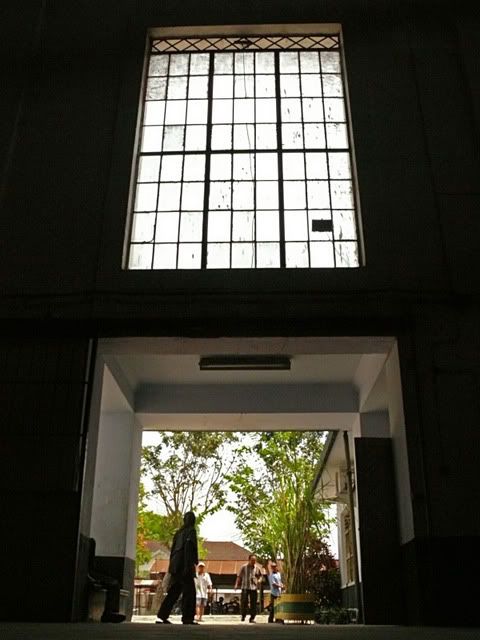
The Principal Gate of Gondang Winangoen Sugar Cane Factory 1860
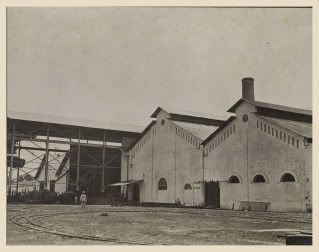
The Gondang Winangoen sugar cane factory - 1921
Source: KITLV
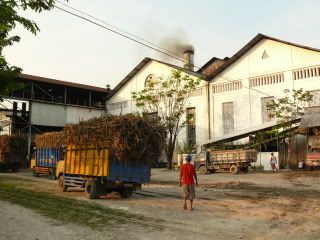
The Gondang Winangoen sugar cane factory - 2010
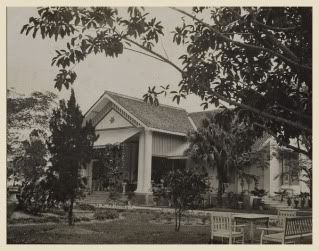
The Dutch officer house in 1921.
Built in the indische style in the end of 19th century.
See the tuscans column in portico and its base.
Source: KITLV
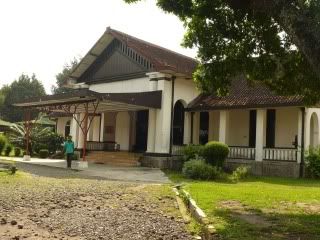
The Dutch officer house in present day.
The Sugar Cane Museum - Central Java since 11th of September 1982
ON MISSION
The Gondang Winangoen Suiker fabriek located at Jogja-Solo road, exactly at the Village Plawikan, Jogonalan District, Klaten Regency. Inside the factory area there are beautiful tropical houses built in 1930s, until now most still maintained and used as a sugar factory employee residence.
On 18th of August 2010, accompanied by Budi N. Dharmawan, we cruised that sugar factory which built in 1860. We want to tread the golden history of Gondang Winangoen Sugar Factory, feel the life an ambtenaar with overnight stay in a indische house which used administratuur in colonial era.
Fortunately, we came right on the milling season. Sip the sweetness of cane at Gondang Winangoen.
On 18th of August 2010, accompanied by Budi N. Dharmawan, we cruised that sugar factory which built in 1860. We want to tread the golden history of Gondang Winangoen Sugar Factory, feel the life an ambtenaar with overnight stay in a indische house which used administratuur in colonial era.
Fortunately, we came right on the milling season. Sip the sweetness of cane at Gondang Winangoen.
MAP OF KLATEN
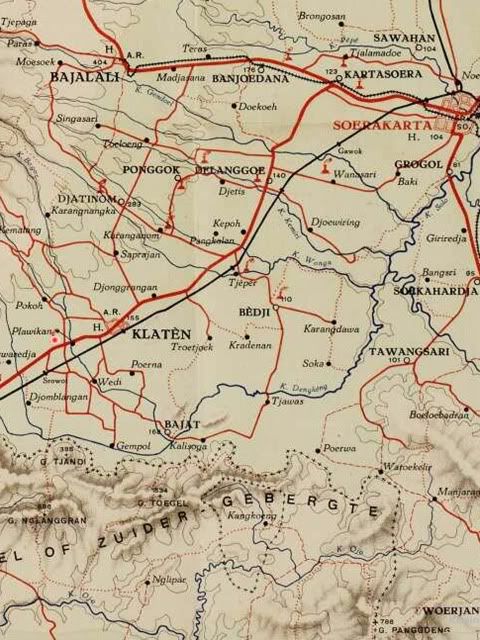
The red point is the location of Gondang Winangoen Suiker Fabriek
[Midden-Java]
“Semarang - Magelang - Jogjakarta – Soerakarta”
Published by het Officieele Toeristen Bureau
Batavia, 1925
Source:
Koninklijk Instituut voor de Tropen – Mauritskade 63, 1092 AD Amsterdam
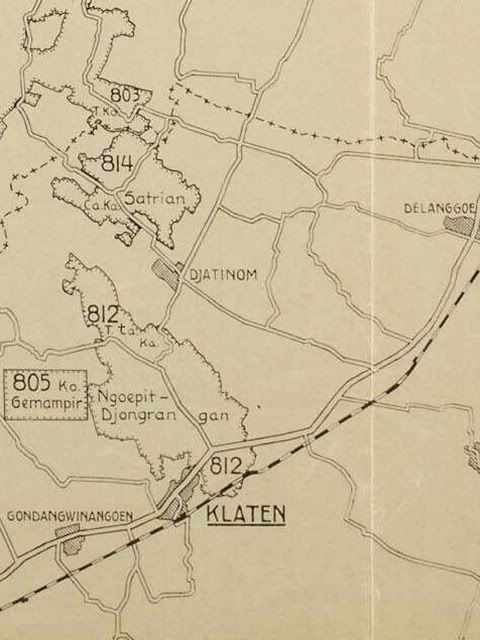
“Residentie Semarang en Djapara-Rembang, Kedoe, Klaten, Soerakarta, Madioen : voorloopige overzichtskaart van de bergcultuur ondernemingen”
vervaardigd door het geografisch instituut van de topografische dienst
Topografische dienst
Batavia, 1947
Source:
Koninklijk Instituut voor de Tropen – Mauritskade 63, 1092 AD Amsterdam
THE OLDEST MILLING MACHINE
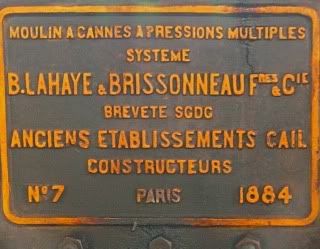

The red point is the location of Gondang Winangoen Suiker Fabriek
[Midden-Java]
“Semarang - Magelang - Jogjakarta – Soerakarta”
Published by het Officieele Toeristen Bureau
Batavia, 1925
Source:
Koninklijk Instituut voor de Tropen – Mauritskade 63, 1092 AD Amsterdam

“Residentie Semarang en Djapara-Rembang, Kedoe, Klaten, Soerakarta, Madioen : voorloopige overzichtskaart van de bergcultuur ondernemingen”
vervaardigd door het geografisch instituut van de topografische dienst
Topografische dienst
Batavia, 1947
Source:
Koninklijk Instituut voor de Tropen – Mauritskade 63, 1092 AD Amsterdam
THE OLDEST MILLING MACHINE

We amazed about the giant wheels, tubes, and pipes. As a satire novel in 18th century works of Jonathan Swift, we are like the Lilliputians in the Gulliver’s country. In the milling station, I found the inscription written on the machine with the French language ”Moulin A Cannes A Pressions Multiles Systeme B.Lahaye & Brissonneau F&C Brevete SGDG Anciens Establissements Cail Contructeurs No.7 Paris 1884”. It means the multiple systems sugar cane milling machines were made in France 1884, which identified the oldest engine of the many sugar factories in Indonesia.
CARBONATATION SYSTEM
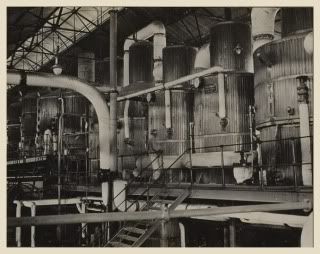
The Evaporation Station - 1921
Source: KITLV
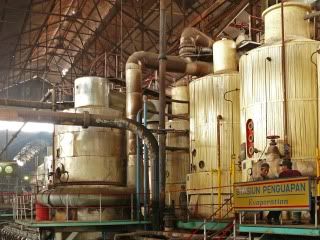
Evaporation Station - 2010

The Evaporation Station - 1921
Source: KITLV

Evaporation Station - 2010
After the “Purification Station”, the net sap flows into the pipes through the soared tubes in “Evaporation Station” to get the juice with a certain viscosity.
Uniquely, the purification process in Gondang Winangoen using double carbonatation system since Dutch Indies which does not exist in other sugar factories today. The carbonatation involves the introduction of milk of lime (calcium hydroxide suspension) and carbon dioxide enriched gas into the "raw juice" to form calcium carbonate and precipitate impurities that are then removed.
We amazed about the giant wheels, tubes, and pipes. As a satire novel in 18th century works of Jonathan Swift, we are like the Lilliputians in the Gulliver’s country.
Uniquely, the purification process in Gondang Winangoen using double carbonatation system since Dutch Indies which does not exist in other sugar factories today. The carbonatation involves the introduction of milk of lime (calcium hydroxide suspension) and carbon dioxide enriched gas into the "raw juice" to form calcium carbonate and precipitate impurities that are then removed.
We amazed about the giant wheels, tubes, and pipes. As a satire novel in 18th century works of Jonathan Swift, we are like the Lilliputians in the Gulliver’s country.
THE OLD LOCO OF
ORENSTEIN KOPPEL 1931
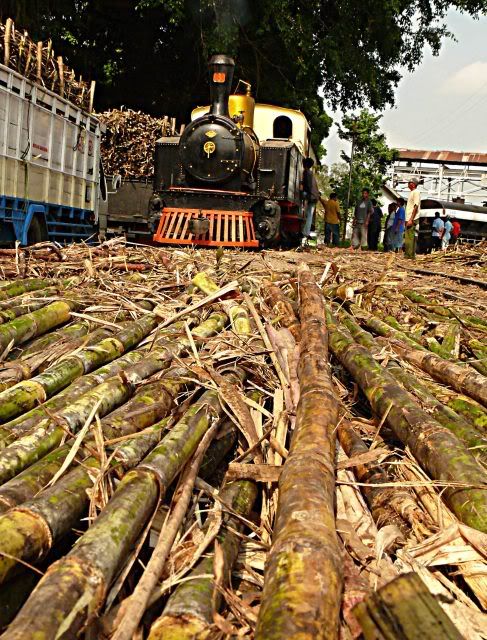
The "Gendismanis" - old loco from Orenstein Koppel 1931
This old locomotive had served in the Rendeng Sugar Factory in Kudus until 1998. "Initially used as a carrier of cane for about the 2 years in Gondang Winangoen. Name of Gendismanis inaugurated at a pre-milling ceremony in May 2010 ", said Bimo Satrio an employees of Gondang Winangoen Museum. After the conservation process since late 2009, now it is revitalized as the old locomotive train in Agrotourism of Gondang Winangoen.
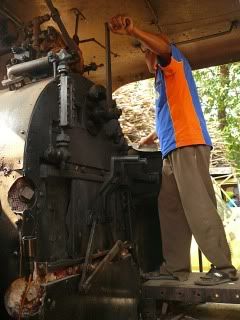
The Operator
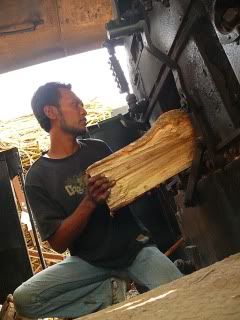
The Stoker
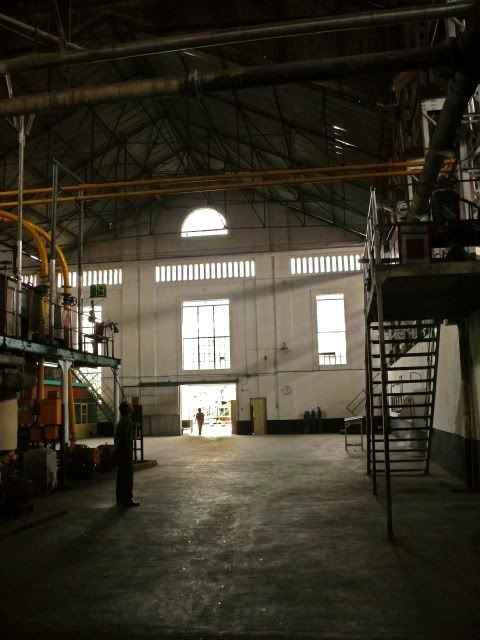
Inside the Sugar Cane Factory
HISTORICAL BACKGROUND
ORENSTEIN KOPPEL 1931

The "Gendismanis" - old loco from Orenstein Koppel 1931
This old locomotive had served in the Rendeng Sugar Factory in Kudus until 1998. "Initially used as a carrier of cane for about the 2 years in Gondang Winangoen. Name of Gendismanis inaugurated at a pre-milling ceremony in May 2010 ", said Bimo Satrio an employees of Gondang Winangoen Museum. After the conservation process since late 2009, now it is revitalized as the old locomotive train in Agrotourism of Gondang Winangoen.

The Operator

The Stoker

Inside the Sugar Cane Factory
HISTORICAL BACKGROUND
This plant was built by a trading company of NV Klatensche Cultuur Maatschappij in 1860, or ten years before the end of Cultuurstelsel (forced cultivation system). By coincidence, when the plant was built, ironically Eduard Douwes Dekker (pseudonym as Multatuli) published the book "Max Havelaar" which contains scathing criticism of the system of forced cultivation that shook the public.
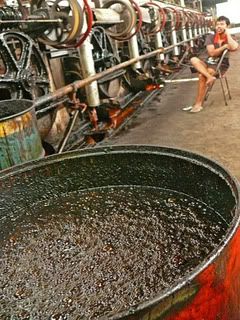
The Residuals
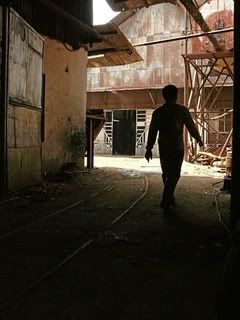
Unused Railway
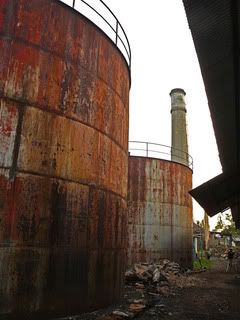
The Giant Tubes and Tower
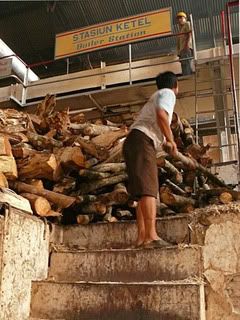
The Boiler Station
Labor works to supply the timber for cane manufacturing.

Without Ear Silencer
A worker who served as a guard engine is sitting relaxed, ignoring the noise of the engine roar that we think is deafening. "It is usual, it doesn’t matter", he said casually when I asked why not use the silencer for his ear.
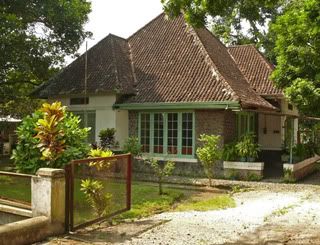
The Exotic House and Garden
Surrounding the sugar cane factory, there are many beautiful houses with tropical roof and cozy veranda built in 1930's.

The Residuals

Unused Railway

The Giant Tubes and Tower

The Boiler Station
Labor works to supply the timber for cane manufacturing.

Without Ear Silencer
A worker who served as a guard engine is sitting relaxed, ignoring the noise of the engine roar that we think is deafening. "It is usual, it doesn’t matter", he said casually when I asked why not use the silencer for his ear.

The Exotic House and Garden
Surrounding the sugar cane factory, there are many beautiful houses with tropical roof and cozy veranda built in 1930's.
ADMINISTRATUUR HUIS
We spent a night in this old mansion, called "Rumah Besaran". It is a former house of administrator in colonial era. Sitting on the veranda, pouring tea and sugar, then stir. Now the show is no longer the bitter forced cultivation system more than 150 years ago. Without intend to forget the history, the sweetness of the colonial legacy made an impression on tongue and heart, until now.
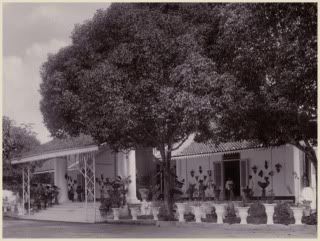
Administratuur huis - 1921
Built in Indische style in the end of 19th century.
Source: KITLV
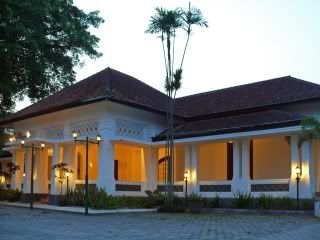
Adminitratuur huis - 2010
Probably, this house was renovated in the 1930's. The facade of this house was improved by new modern style, an art deco style which more simple in its facade.
***
See a whole this story in
National Geographic Traveler - Indonesian Edition
November-December 2010

Administratuur huis - 1921
Built in Indische style in the end of 19th century.
Source: KITLV

Adminitratuur huis - 2010
Probably, this house was renovated in the 1930's. The facade of this house was improved by new modern style, an art deco style which more simple in its facade.
***
See a whole this story in
National Geographic Traveler - Indonesian Edition
November-December 2010